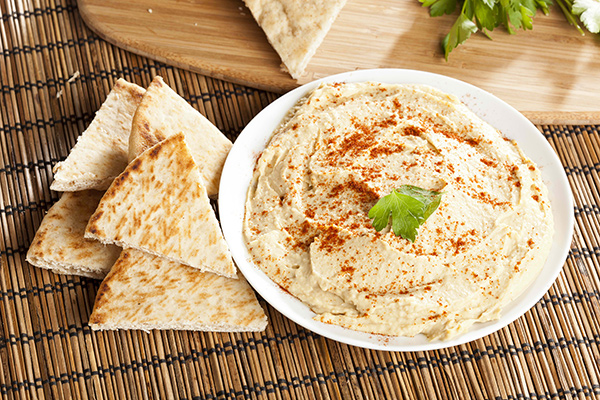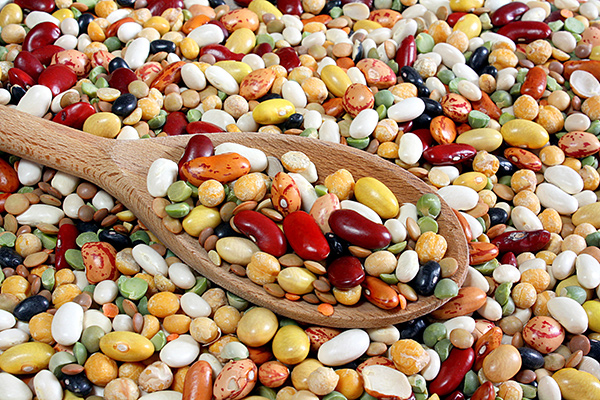Mention eating beans to many Americans and they might recall a phrase such as: “beans are the miracle fruit, the more you eat, the more you toot”, meaning that beans can produce gas and bloating.
For the athlete, this might be an annoyance they don’t want to deal with especially during training or competition.
Nutritional information specialized for athletes
is provided by registered dieticians
at Sansum Clinic of Santa Barbara.
However my colleague and sports nutritionist, Ellen Coleman, RD refers to beans in her presentations as an “ergogenic aide” for triathletes; they keep you buoyant in the water, gas propelled on the bike and blow everyone away on the run.
Jokes aside, beans truly are super foods and should be included in the diet of all athletes. If you have been avoiding them because of their effect on your gastrointestinal system, this article will hopefully encourage you to re-introduce them.
Beans are a wonderful post performance food since they contain carbohydrate to replace glycogen and protein for repair of tissue. Each ½ cup cooked beans contains ~20 gm carbohydrate which is similar to a typical slice of bread. They contain more natural dietary fiber than any whole plant food. The goal for fiber is at least 25 grams per day. Each ½ cup cooked beans contains 4 to 7 grams. Beans contain a significant amount of a special type of fiber called “soluble fiber” which can lower blood cholesterol and help regulate blood sugar levels.
Sources of plant proteins such as beans do not contain concentrated amounts of protein, however, when combined with other foods at a meal, the protein content will add up. One half cup of most types of cooked beans contains 7 gm of protein which is the equivalent of 1 ounce of meat. The recommendations of “complementing” plant proteins in order to increase the quality of the protein (eating beans with grains) has been updated with new research stating that is not necessary during each meal. Simply eating a variety of plant proteins during the day is adequate for adults.
Worldwide where people rely on vegetarian sources of protein they usually eat combinations of plant proteins. Examples include the beans and rice eaten by Spanish cultures and rice and tofu (soy) in Asian countries. Beans contain notable amounts of iron, zinc, potassium and magnesium, all important nutrients for everyone including athletes. The iron in beans is more difficult to absorb than the iron in animal protein (meat). Eating beans with a vitamin C rich food will significantly increase the iron absorption. For example, enjoy salsa or peppers with your beans. Beans also contain significant amounts of valuable B vitamins known to help athletes release energy from food.
The absorption of vitamins A and C and minerals in beans can be enhanced with sprouting. Sprouting can also increase the digestibility of beans by initiating the breakdown of complex carbohydrates.
MORE ATHLETE NUTRITION INFO:
Much of the gas that occurs when eating beans is because of certain indigestible fibers that are resistant to enzyme breakdown. They pass through the system to the colon where they ferment producing carbon dioxide, hydrogen and a few noxious gasses in the process. The beneficial bacteria that are produced during the fermentation can have a positive effect on the colon linked to the reduction of colon cancer and other health conditions. The study of the importance of bacteria including gut bacteria called the human microbiome or microbiota is producing fascinating research about health and wellness amongst individuals and their families.
Helping your body become familiar or tolerant to beans is something to consider by adding small amounts of beans regularly to salads, soups and grain or pasta dishes. Hummus is a bean dip that many people enjoy and can be eaten with vegetables or whole grain crackers as well as used as all or part of the filling for burritos or wraps.
There are many myths about how to get rid of the gas forming properties of beans, but none are totally supported in science. Soaking beans and discarding the soaking water is one recommendation which some people claim is helpful as is eating them with garlic or epazote, an herb used in Mexican cooking. The product “beano” contains a specific enzyme that can help digest one type of indigestible sugar in beans and relieve discomfort.
Similar to all foods, it is recommended that athletes experiment with beans during times that won’t interfere with your workout.
Canned beans contain similar nutritional content as home made beans. They are both heated which will destroy some of the B Vitamins, however the fat soluble vitamins (A and E) and the minerals are stable. Purchasing canned beans without added salt and additives is recommended and instead adding your own salt and flavorings, as needed. The cost of canned beans is much higher than making your own. The lining of most cans on the current market usually contains sources of the controversial chemical Bisphenyl A which can be avoided by buying BPA free canned beans. If your can does not state this, you can contact the company. Learn more about BPA on the NIEHS website.
If you usually buy canned beans, consider cooking your own by mixing the beans with water and cooking on the stovetop until done. This takes time but little effort. Cooking the beans overnight in a crockpot is an ideal way to wake up to cooked beans to be used in your favorite recipe. Why not enjoy beans for breakfast with avocado, tomato and onions or huevos rancheros (eggs with salsa and corn tortillas). Bon Appetite!
– Gerri French, MS, RD, CDE

Hummus is a high-fiber, high-protein snack made from garbanzo beans (also known as chickpeas).
More Sansum Nutritional Information for Athletes


